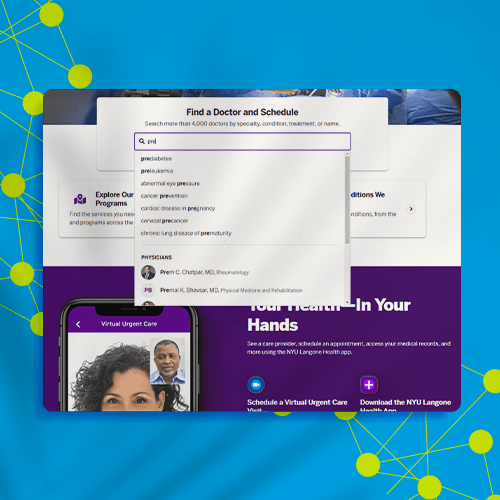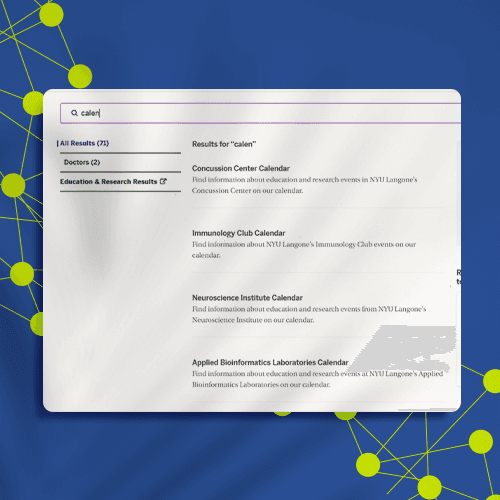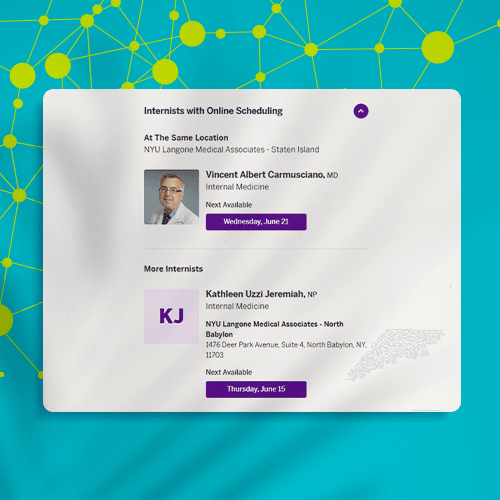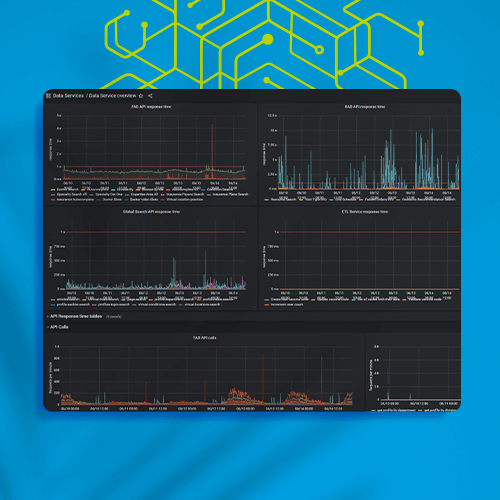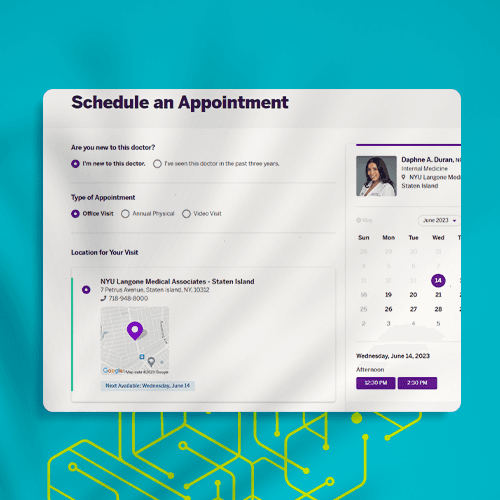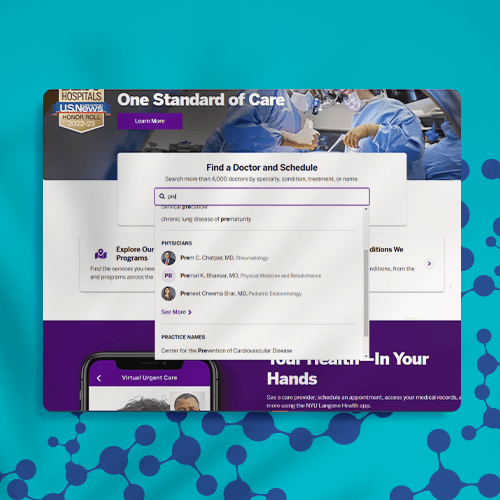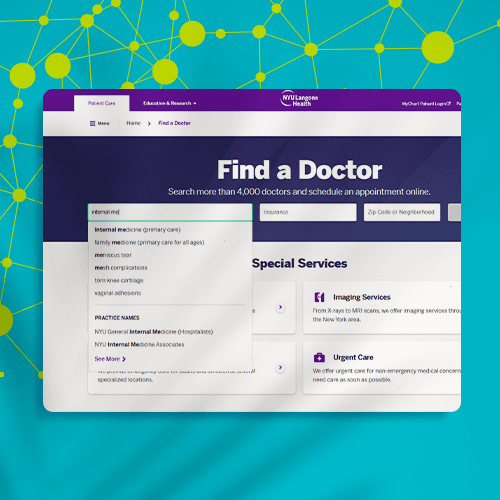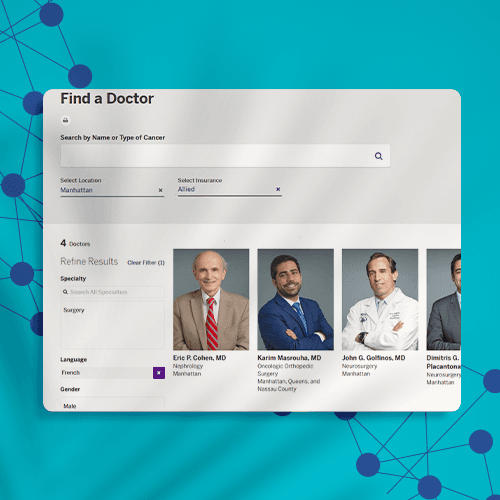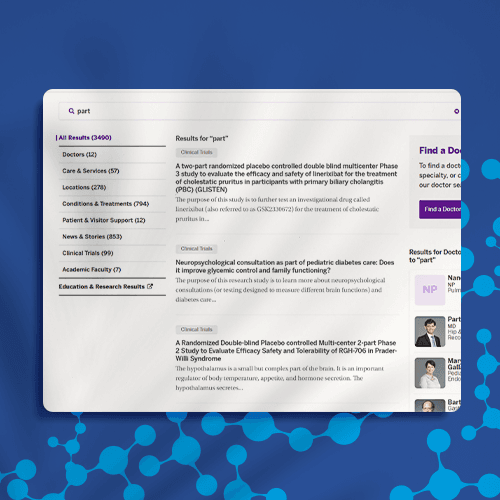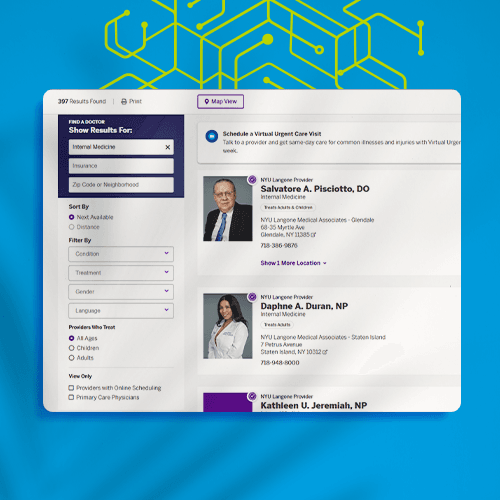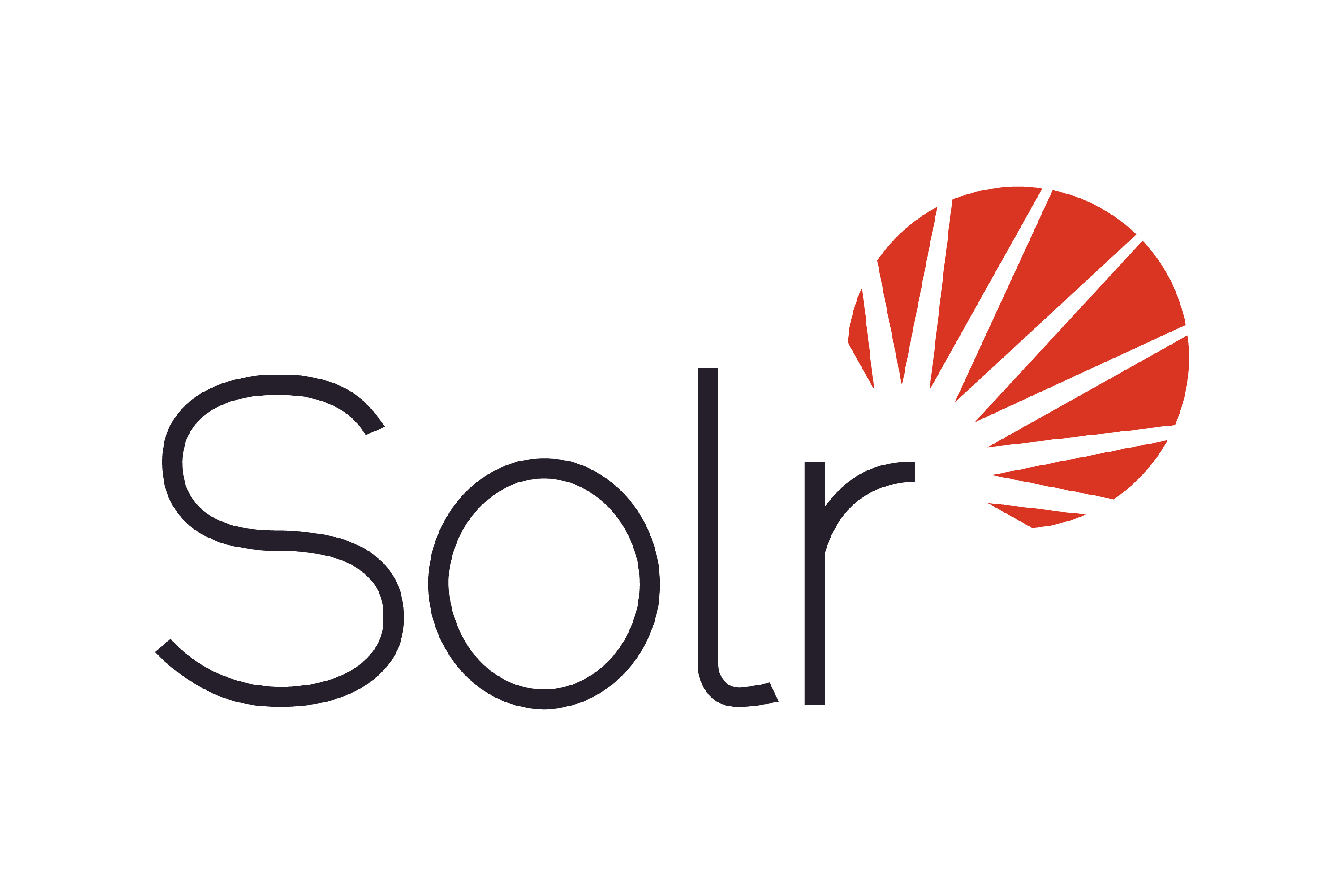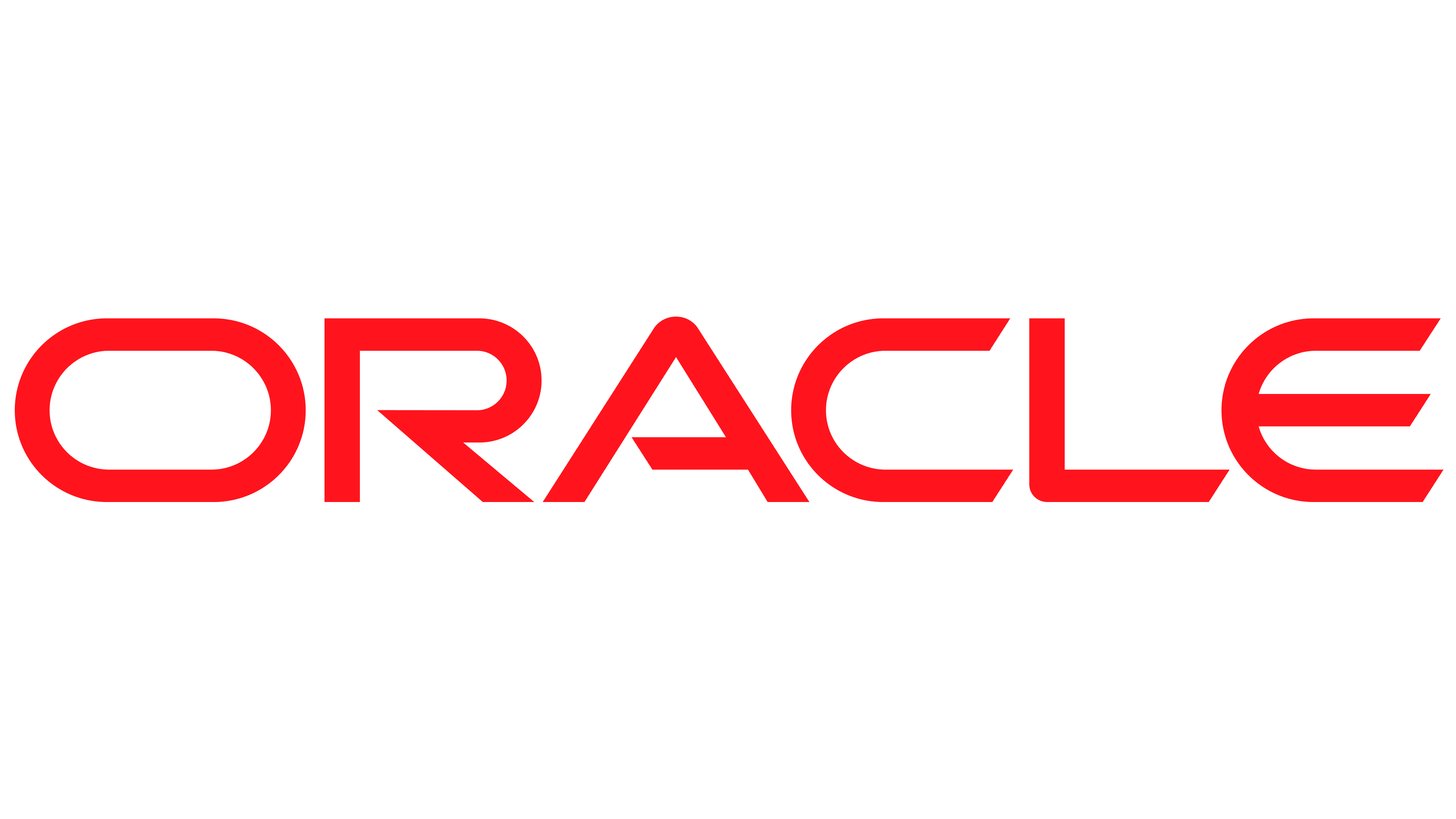Major Hospital Chain: Redefining Patient Journeys Through Custom Search
When one of the nation’s premier medical centers needed to upgrade their website search experience, they turned to our team at Lineate. This client provides award-winning patient care, unmatched leadership in academic instruction, and world-renowned scientific discovery. But when their patients looked for a provider on their website they had to rely on a basic search experience. Our team was tasked with transforming this search function into a specialized natural language processor to connect physicians and patients based on symptoms, clinical expertise, and research.
Share:
Service:
- Data Integration, Analytics, and Activation
Got a project?
Harness the power of your data with the help of our tailored data-centric expertise.
Contact usShare:
Service:
- Data Integration, Analytics, and Activation
Got a project?
Harness the power of your data with the help of our tailored data-centric expertise.
Contact usProblem
The existing website search ran on a Google Appliance. It provided a functional but generic search experience, directing patients by keyword instead of using customized information to best meet their needs. Matching patients to doctors well is complex; it requires an understanding of health care, of patients’ must-haves, and of individual expertise across a vast network of doctors. The process, however, needs to be simple and use a natural language interface. In short, our client asked us to accomplish two objectives:
-
Improve the ease with which patients find the best care and the best physician for their needs.
-
Improve the efficiency of appointment management for both patients and clinicians.

Solution
Lineate built a powerful “Find a Doctor” application that uses an extensively customized search to provide highly accurate physician recommendations using a natural language interface. To create a robust filtering and type-ahead search, we incorporated over 37,000 synonymized terms across conditions, treatments, specialties, and insurances, indexing over 150,000 unique sources of data.
We began by writing a custom web crawler that indexed the websites of both the hospital and the medical university. This crawler indexed structured doctor data directly from the physician database. It also used contextual knowledge about the sections of the site that it was crawling to make decisions about indexing otherwise unstructured legacy web content.
Additionally, by adding extensive synonym mapping to this system, we were able to tune and boost the relevancy of indexed terms. This allows all users to search using the vocabulary most comfortable for them. Doctors can search using specific medical terminology, while patients can use common terms. For example, a patient looking for a doctor specializing in bruises would get the same results as a doctor searching for a hematoma referral.
Finally, we developed a custom integration with the medical center’s Hospital Management System (HMS) to receive near real time updates from their patient scheduling system in order to update a searchable appointment availability index within the search engine. Because this integration is able to stay in sync with the HMS scheduling system within seconds, the frequency of website users attempting to book an appointment only to discover at the end of the booking process that the appointment time is no longer available has been reduced to almost zero.
Results
This intuitive interface has increased users’ time on our clients’ site by over 60% and has resulted in an impressive 26% increase in overall booked appointments.
Tech Stack
We employed a combination of services, including microservice architecture, Solr Cloud, Java Spring Boot, Oracle DB, Ansible, Python, and Jenkins. Leveraging these technologies helped us to enhance our operations, streamline processes, and achieve efficient management and deployment of applications, all of which led to seamless functionality and optimized infrastructure.
